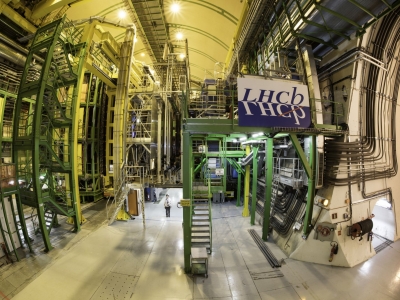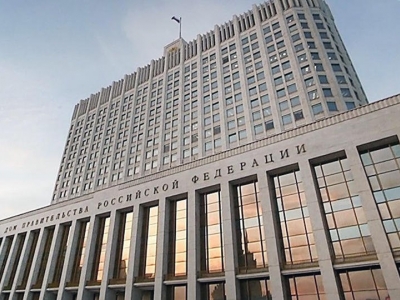NRC "Kurchatov Institute" scientists started to modernize the track system of LHCb experiment

The CERN continues to work on modernization of experiment on the Large Hadron Collider (LHC). Employees of NRC "Kurchatov Institute", who participate in LHCb experiment, started to mount elements of new track detector. The next work session of LHC will start in 2021.
The LHCb experiment (Large Hadron Collider beauty) is one of the four major LHC experiments. The "b" letter in the name of collaboration means "beauty", which is directly related to the main object of research in this experiment, the particles containing in their composition the so-called "bottom" (b) quark. Rare processes occurring with these heavy particles (decompositions, oscillations) may not be described in the framework of the Standard Model (SM) of elementary particles. Deviations from the SM predictions, if they are discovered, will serve as an indication of the so-called “New Physics” outside the SM.
Employees of the Kurchatov Nuclear Physical Complex (KYAFK) of NRC "Kurchatov Institute" have been participating in the LHCb collaboration since 2013. In December 2018, the work of the collider was suspended for two years. Scientists and engineers have started upgrading and scheduled repair of the accelerator and detectors.
As part of the modernization of the LHC NRC "Kurchatov Institute" employees started to mount elements of new track system of LHCb experiment, which parts were manufactured at the NRC "Kurchatov Institute". During this project, called SciFi, the LHCb tracker, built on gas drift tubes, is replaced by a new one, made on the basis of long modules assembled from optical scintillation fibers. The signal from them will be read by a multichannel silicon photomultiplier (SiPM). The transverse size of one detector layer is 5x6 m, the total area of the detector exceeds 400 m2. Creating a track detector of this scale is carried out for the first time in the world.
In the traditional technology that uses detectors on solid scintillators, the scintillator itself and the optical fiber are two different objects. In SciFi technology, the scintillator substance is distributed inside the fiber, which, thereby, combines the properties of both the active element and the light guide. This technology has a number of significant advantages: reliability, high speed and accuracy in determining the particle trajectory. Low mass and power consumption, the ability to work effectively in a strong magnetic field, the lack of heat generation in the detector's working area make this technology extremely attractive for use in space-based experiments, as well as in medical diagnostics tasks. Over time, such detectors can become a new standard for track detectors in high energy physics and in applied fields.
A production infrastructure and a technology for the production of unique fiber-optic modules for this detector were developed at the site of the NRC "Kurchatov Institute". The project was implemented jointly with RWTH Aachen (Germany), Technical University Dortmund (Germany), Swiss Federal Institute of Technology Lausanne (Switzerland) and CERN.
In 2017-2018 in NRC "Kurchatov Institute" 138 modules, which took more than a million meters of optical fiber, where manufactured. Most of these modules have already been tested and delivered to CERN. Nowadays, CERN integrates the modules and readout electronics into a single structure of the new track detector. The next work session of LHC will start in 2021.
Source (in Russian): http://www.nrcki.ru/






